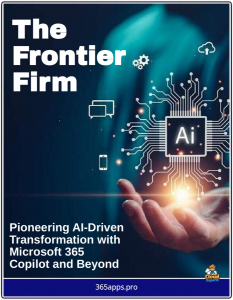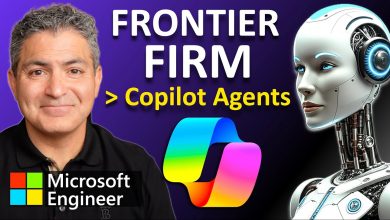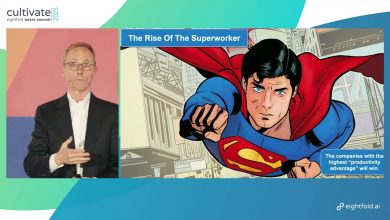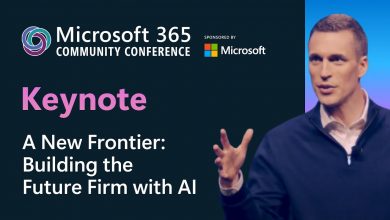Super-Intelligence 2.0: The Next Leap After ChatGPT
This guide offers a concise primer for business leaders, IT professionals, and change agents seeking to understand how to unlock the full potential of Microsoft 365 AI.
 Our book explores the strategic adoption of Microsoft 365 Copilot, delving into its potential to amplify human productivity, foster innovation, and deliver measurable value across organizations.
Our book explores the strategic adoption of Microsoft 365 Copilot, delving into its potential to amplify human productivity, foster innovation, and deliver measurable value across organizations.
AI is reshaping the way we think, collaborate, and create, streamlining daily tasks and transforming how we do our work, unlocking unprecedented levels of enterprise productivity.
Copilot combines the power of Large Language Models (LLMs) with your data in the Microsoft 365 Apps — your calendar, emails, chats, documents, meetings and more, to empower Ai with knowledge personalized to your work. Microsoft 365 AI Copilots represent a game-changing opportunity to harness AI to transform everyday work.
The Era of Ai-Powered Superintelligence
The era that began with ChatGPT in late 2022 has rapidly outgrown simple conversation. We have entered the age of Super-Intelligence 2.0: artificial intelligence that no longer just answers questions but reasons deeply, self-corrects, remembers everything about you, uses tools independently, and acts as a fully autonomous colleague.
Today’s leading models, such as OpenAI’s o3 series, Anthropic’s Claude 3.5 with computer-use capabilities, and Microsoft’s latest Phi engines, spend seconds or even minutes thinking through problems before responding. They break complex challenges into logical steps, backtrack when they make mistakes, and now reach PhD-level performance across science, mathematics, and software engineering.
These systems have also gained long-term memory and true personalization. ChatGPT, Claude, and Grok can now recall every detail you have ever shared across months of interaction, effectively transforming a generic model into your own private expert who understands your business, style, and long-term objectives.
Perhaps the most transformative advance is the rise of agentic workflows. Modern AI can control browsers, write and run code, send emails, complete forms, and manage entire projects with only high-level guidance. Microsoft 365 Copilot, Anthropic’s Computer Use, and a growing ecosystem of open-source frameworks have turned these capabilities into everyday enterprise tools.
Multimodal understanding has matured just as quickly. The latest models process images, voice, video, and documents natively and in real time, making them genuine digital assistants rather than text-limited chatbots.
The results are already dramatic. Software teams ship three to five times faster. Marketing departments launch personalized campaigns in hours instead of weeks. Customer-support organizations resolve seventy to eighty percent of tickets without human involvement, and financial analysts test thousands of scenarios in minutes.
In 2025, the divide between AI leaders and laggards is widening at an unprecedented pace. According to McKinsey, the most advanced ten percent of companies are positioned to capture roughly eighty percent of the estimated 4.4 trillion dollars in annual productivity gains.
We have moved decisively from “AI that chats” to “AI that works.” The coming twelve to twenty-four months will determine which organizations treat artificial intelligence as a curiosity and which rebuild every process around super-intelligent agents. Super-Intelligence 2.0 is no longer on the horizon—it is already available to anyone ready to use it.
Charting Your Journey to the Frontier Firm
The organizations that will dominate this new era are what Microsoft calls Frontier Firms: human-centered companies that systematically deploy fleets of autonomous agents across every function, treat AI as a new class of colleague rather than a tool, and redesign roles, incentives, and culture around exponential amplification.
Becoming a Frontier Firm is no longer optional; it is the only reliable way to remain competitive once super-intelligent agents are cheaper, faster, and more capable than traditional teams at the majority of knowledge work.



